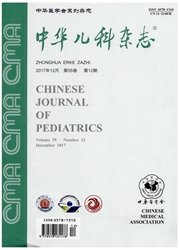

 中文摘要:
中文摘要:
目的 探讨小鼠胚胎胃肠道和胎盘组织的菌群构成.方法 采集昆明系孕鼠的胚胎组织和胎盘组织24份,分别为孕早期(孕12- 13 d)胚胎胃肠道组织、孕晚期(孕19 -20 d)胚胎胃肠道组织和孕晚期(孕19 -20 d)胎盘组织各8份.应用血液或组织DNA提取试剂盒提取胃肠道组织和胎盘组织菌群的DNA,然后将24个样本所提取的DNA进行高通量测序.统计学方法采用方差分析.结果 孕鼠胚胎胃肠道组织及胎盘组织的菌群在“门”水平有4个优势菌群,分别是变形菌门(95.00%、88.14%、87.26%),拟杆菌门(1.71%、2.15%、2.63%),放线菌门(1.16%、4.10%、3.38%)及厚壁菌门(0.75%、2.62%、2.01%).在科水平有9个优势菌科,其中以肠杆菌科(46.99%、44.34%、41.08%)、希瓦菌科(21.99%、21.10%、19.05%)、莫拉菌科(9.18%、7.09%、5.64%)为主.菌群种类孕早期和孕晚期胚胎胃肠道菌群分别为65.44%和62.73%,与孕晚期胎盘组织菌群相同.菌群丰度“科”水平3组相同菌群的含量分别占78.16%、72.53%及65.78%.结论 胚胎胃肠道和胎盘组织有菌群定植,同时对其进行了分类.
 英文摘要:
英文摘要:
Objective To explore the composition of the gastrointestinal bacterial flora of mouse embryos and the placenta tissue bacterial flora.Method Twenty-four specimens were collected from pregnant Kunming mouse including 8 mice of early embryonic (12-13 days) gastrointestinal tissues,8 cases of late embryonic (19-20 days) gastrointestinal tissues,8 of late pregnancy placental tissues.The 24 samples were extracted by DNeasy Blood & Tissue kit for high-throughput DNA sequencing.Result The level of Proteobacteria,Bacteroidetes,Actino-bacteria and Firmicutes were predominantin all specimens.The relative content of predominant bacterial phyla in each group:Proteobacteria (95.00%,88.14%,87.26%),Bacteroidetes (1.71%,2.15%,2.63%),Actino-Bacteria (1.16%,4.10%,3.38%),Firmicutes(0.75%,2.62%,2.01%).At the level of family,there were nine predominant bacterial families in which Enterobacteriaeae,Shewanel laceae and Moraxellaceae were dominant.The relative content of dominant bacterial family in eachgroup:Enterobacteriaeae (46.99%,44.34%,41.08%),Shewanellaceae (21.99%,21.10%,19.05%),Moraxellaceae(9.18%,7.09%,5.64%).From the species of flora,the flora from fetal gastrointestinal in early pregnancy and late pregnancy (65.44% and 62.73%) were the same as that from placenta tissue in the late pregnancy.From the abundance of bacteria,at the level of family,the same content of bacteria in three groups accounted for 78.16%,72.53% and 65.78% respectively.Conclusion It was proved that the gastrointestinal bacterial flora of mouse embryos and the placenta tissue bacterial flora were colonized.At the same time the bacteria are classified.
 同期刊论文项目
同期刊论文项目
 同项目期刊论文
同项目期刊论文
 期刊信息
期刊信息
